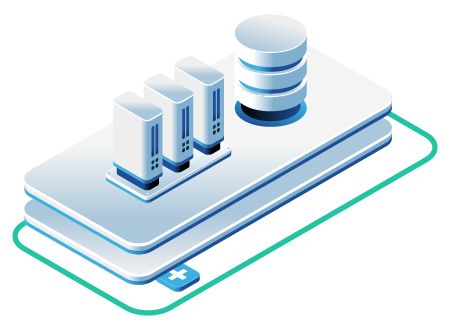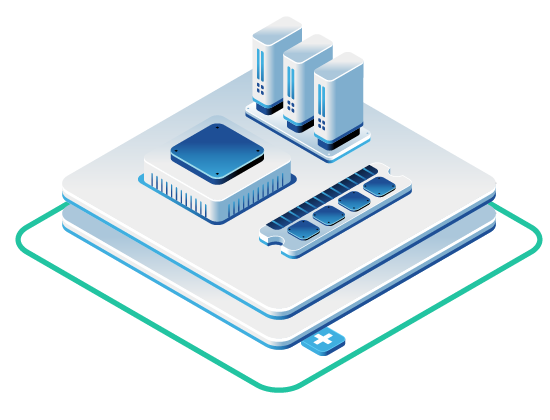In this article
- The Case for Local Storage: Uncompromising Speed
- The Case for Ceph: Resilience, Scale, and Flexibility
- How to Make the Right Choice
- Make This Decision With Data, Not Guesswork
Choosing your storage system is one of the most important infrastructure decisions you’ll make. Get it wrong, and you could be paying for redundant systems you don’t need or, worse, building on a platform that can’t survive a simple server failure.
We’ve seen customers cut their storage costs by 40% by switching their Cassandra clusters from network storage to local drives. We’ve also seen businesses lose hours of productivity because they assumed their application’s RAID setup was enough protection. Neither scenario had to happen.
The choice usually comes down to two models: direct-attached local storage or a distributed network solution like Ceph. There’s no universal right answer. The best fit depends on your application’s design and how much risk your business can tolerate.
Let’s break down the practical trade-offs.
The Case for Local Storage: Uncompromising Speed
Local storage means the drives are physically installed in the same server that runs your application. At OpenMetal, this means our Bare Metal Servers provisioned with multiple Micron 7450/7500 MAX NVMe SSDs—some of the fastest enterprise-grade drives available.
The benefit is definitely performance!
When data lives in the same chassis as the CPU, you eliminate the “network tax.” Requests don’t need to be packaged, sent over a switch, processed by a separate storage server, and sent back. You get the lowest latency and highest I/O operations per second (IOPS) possible.
What this means for your business:
- Faster data analytics and batch processing
- Quicker API response times for end-users
- More agile development cycles
When to Choose Local Storage
This model wins when your application fits one of two profiles.
Your Application Already Handles Redundancy
This is the most critical point, and it’s often missed. If you’re running modern distributed software like blockchain nodes, Cassandra, ScyllaDB, or sharded databases, your application already replicates data across multiple servers. It’s designed to expect and survive the failure of a single node.
In this scenario, using resilient network storage like Ceph is simply redundant. You’re paying for replication twice: once at the application layer and again at the storage layer. The smarter move is to use high-speed local storage and let the application do what it was built to do.
Raw I/O Matters More Than Immediate Recovery
For some high-performance computing or data ingestion workloads, the goal is finishing the job as fast as possible. You’re willing to accept that if a server fails, there will be a recovery period. The daily performance gains outweigh the manageable downtime risk.
On our bare metal servers, these local NVMe drives are typically configured in hardware RAID 1 (mirroring). This protects against a single drive failure without sacrificing speed. That said, RAID 1 won’t save you from a motherboard failure or power supply issue, which is exactly why application-level redundancy matters for critical data.
Not sure if you need network storage? Let’s walk through your architecture—no sales pitch required.
The Case for Ceph: Resilience, Scale, and Flexibility
 Ceph takes a different approach. It’s a distributed, software-defined storage system. Instead of living in one server, a Ceph cluster pools drives from many servers into a single, unified, self-healing system.
Ceph takes a different approach. It’s a distributed, software-defined storage system. Instead of living in one server, a Ceph cluster pools drives from many servers into a single, unified, self-healing system.
We build these clusters on specialized hardware. An OpenMetal Storage Large v3 18T server uses 12x 18TB HDDs for mass capacity, with 4x 4TB NVMe drives acting as a high-speed cache and journal layer.
The main benefits are resilience and flexibility.
Business Continuity Through Resilience
In a Ceph cluster, data is automatically replicated (typically three copies) and distributed across different servers. If a drive fails or an entire server goes offline your applications don’t notice. Ceph continues serving data from other copies while self-healing in the background, automatically creating new replicas.
This is what actual high availability looks like. It allows for non-disruptive hardware maintenance and gives you the fault tolerance that customers expect from critical applications.
Powerful, Off-Server Backups
Here’s a key feature of Ceph: it can take off-server snapshots. A snapshot on a local server is useless if that entire server dies. A Ceph snapshot is a true, point-in-time backup stored completely separate from your compute hardware.
The first snapshot is a full backup, with subsequent ones being incremental. This is why off-server backups are non-negotiable for any stateful workload without built-in replication. You get a powerful disaster recovery mechanism that actually works when you need it.
Flexible, Independent Scaling
This offers a major budget advantage. With local storage, you scale storage and compute together. Run out of storage? You have to buy a whole new server, even if you don’t need the extra CPU and RAM.
With Ceph, you scale storage and compute independently. Need more compute? Add a Bare Metal Server. Need more storage? Add another Storage Cluster node. This prevents over-provisioning and paying for hardware you don’t need.
Ceph also provides S3-compatible object storage, making it a cost-effective platform for unstructured data, archives, and media.
How to Make the Right Choice
This decision is a key part of your cloud strategy. At OpenMetal, we support both options because there’s no one-size-fits-all solution.
Here’s how to think about it:
| Factor | Local Storage | Ceph Network Storage |
|---|---|---|
| Performance | Highest (no network latency) | High (with NVMe cache layer) |
| Redundancy | Application-level or RAID 1 | Triple replication, self-healing |
| Failure Recovery | Minutes to hours | Transparent, zero downtime |
| Scaling Model | Coupled (storage + compute) | Independent scaling |
| Best For | Distributed apps, HPC workloads | Stateful VMs, critical services |
Choose Local Storage (Bare Metal) if your application manages its own data replication or if your workload values maximum performance over high availability.
Choose Ceph (Network Storage) if you’re running stateful, critical applications where downtime isn’t an option, or if you need to scale storage and compute independently.
Use Both (Hosted Private Cloud) Our Hosted Private Cloud is built on OpenStack and Ceph, giving you both options. You get a resilient Ceph cluster for your virtual machines by default, and you can integrate bare metal servers with local storage on the same private network for high-performance workloads.
Make This Decision With Data, Not Guesswork
We’ve seen too many IT leaders overpay for resources they don’t use or under-provision and risk their data.
Before you commit, model your workload on our Cloud Deployment Calculator. You can see the exact cost breakdown and find the tipping point where one model becomes more efficient for your business. You can also review our Ceph Storage Cluster pricing and options to see if they make sense for you.
If you’re still weighing your options, our team is available to talk through your specific application. Our engineers will walk through your architecture and help you design infrastructure that fits your workload, not the other way around.
Contact us today to start the conversation.
Schedule a Consultation
Get a deeper assessment and discuss your unique requirements.
Read More on the OpenMetal Blog


































